Idea by
KWY
Call for ideas 2017
Requalifying Urbanity
Requalifying Urbanity
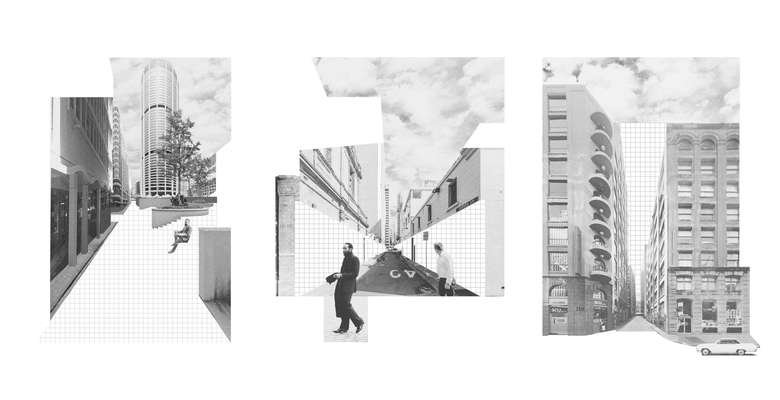
The Future of Architecture will significantly rely on the permanent urban regeneration and re-invention of the cities where most of us live in: we propose a set of analysis tools and subsequent intervention methodologies to qualify the urban environment and improve its use. Without an overcoming physical presence and hinting at a certain domesticity of the public space, we propose the reviving and rehabilitating where the intervention’s artistic completeness is achieved through its use and inhabiting – platforms for ephemeral life to be performed. Our experimental approach departs from defining three planes of intervention - horizontal, vertical and diagonal. The selected sites are subject to a historical research, survey visits to apprehend its present habitability and, finally, the identifying which of the three spatial methodologies are more appropriate for each site specific intervention.

Horizontal
The ground plane intervention will contribute to a sense of unity of the diverse urban characteristics. The pavement qualification will normalize the space and represent a ground structure that may merge sidewalks with the street, promoting a consistent urban dialogue between various urban realities. This new materiality will have a tactile expression as it is seen at first, then stepped, then touched and eventually sat on providing a new sense of comfort.

Vertical
The wall intervention is to be developed through the introduction of vertical planes on street façades, aiming to silence the excess of urban information while creating unexpected moments. These planes may be reflective, mirroring the sky or a distant skyline, offering a subversion of the street scale, augmenting their peripheral vision and allowing visitors to see what is elsewhere. Senses are tested with new colors and shifting pictures on an unexpected panorama.
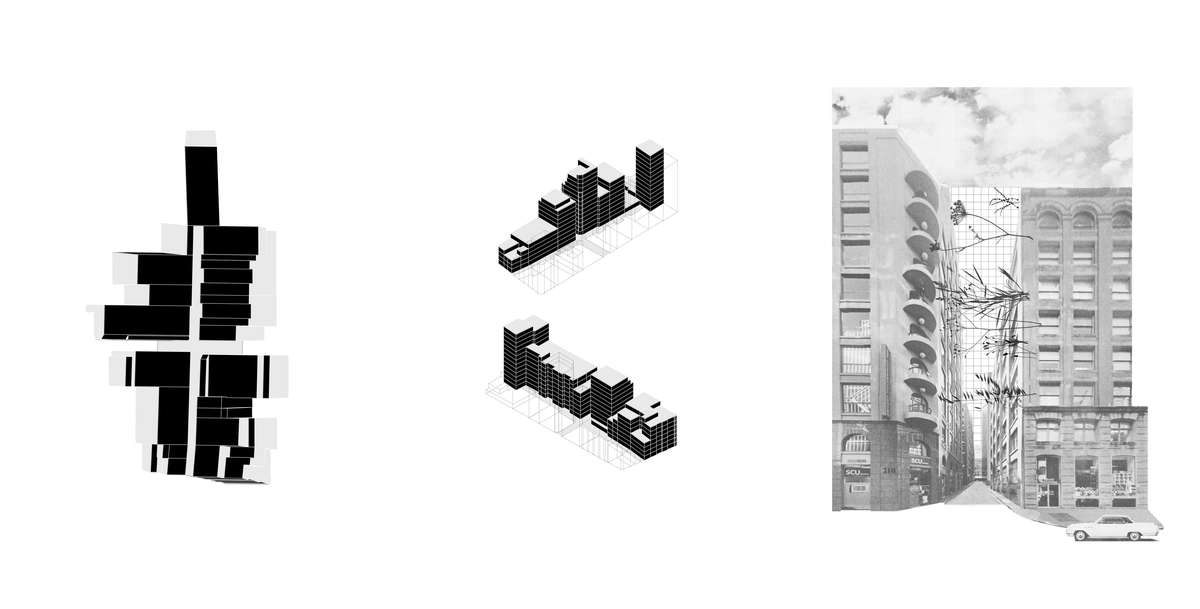
Diagonal
We will introduce a ceiling concept where the crossing of various streets is emphasized, possibly through the implementation of a novel landscape idea. Object or vegetation lines, in different levels, intersect the sky in varying diagonals much like message ropes from window to window. Our intention is to form a pattern that draws on the celestial sphere, limiting it infiniteness while introducing an unexpected landscape.
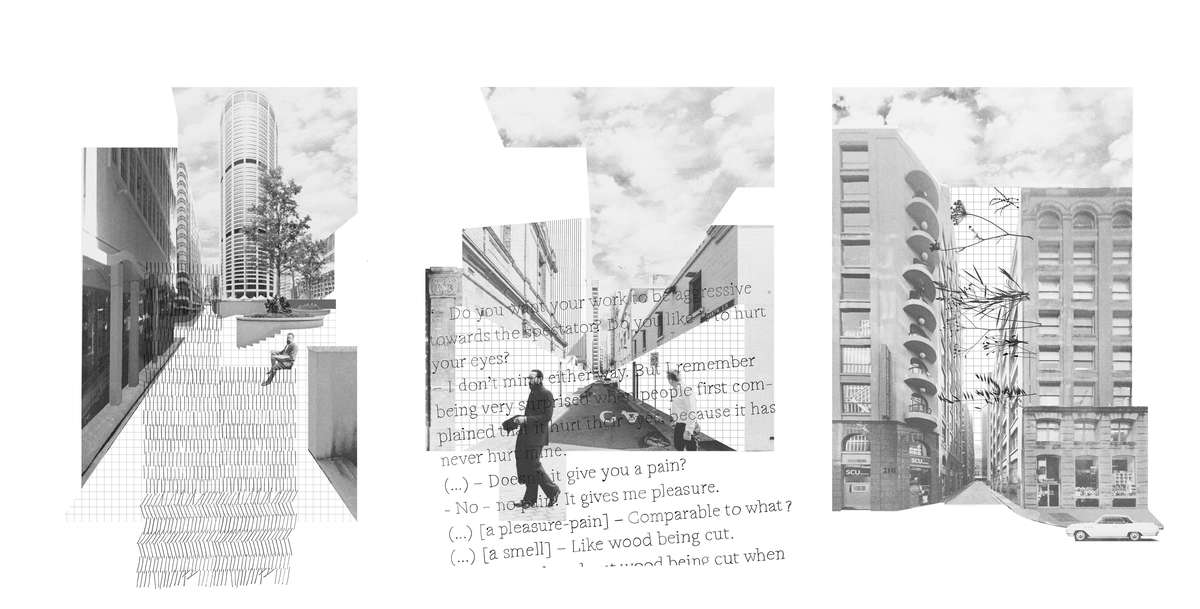
Our triptych may become a part of an urban reinvention that emphasizes the quality of space’s collective use. Each intervention can be seen a laboratory experiment establishing possible guidelines to future interconnected projects. Our methodology can be adapted to different sites through locally appropriate application strategies. Architecture and art must be part of lived spaces with a broad sense of habitability and offer residents and visitors an almost performative urban experience.
Requalifying Urbanity
Requalifying Urbanity

The Future of Architecture will significantly rely on the permanent urban regeneration and re-invention of the cities where most of us live in: we propose a set of analysis tools and subsequent intervention methodologies to qualify the urban environment and improve its use. Without an overcoming physical presence and hinting at a certain domesticity of the public space, we propose the reviving and rehabilitating where the intervention’s artistic completeness is achieved through its use and inhabiting – platforms for ephemeral life to be performed. Our experimental approach departs from defining three planes of intervention - horizontal, vertical and diagonal. The selected sites are subject to a historical research, survey visits to apprehend its present habitability and, finally, the identifying which of the three spatial methodologies are more appropriate for each site specific intervention.

Horizontal
The ground plane intervention will contribute to a sense of unity of the diverse urban characteristics. The pavement qualification will normalize the space and represent a ground structure that may merge sidewalks with the street, promoting a consistent urban dialogue between various urban realities. This new materiality will have a tactile expression as it is seen at first, then stepped, then touched and eventually sat on providing a new sense of comfort.
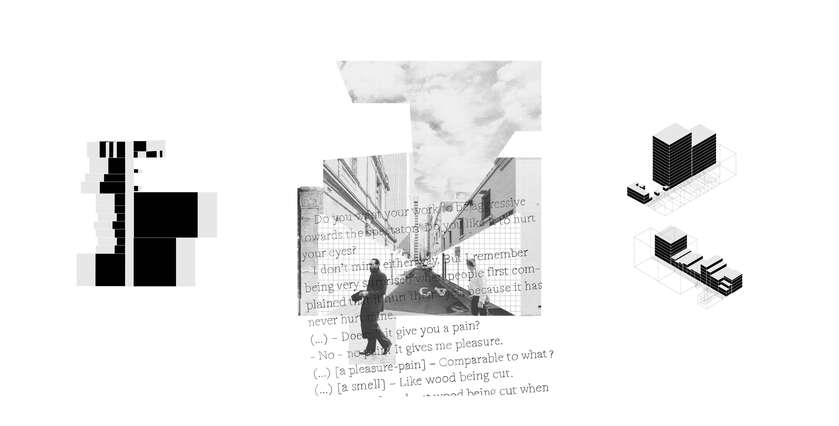
Vertical
The wall intervention is to be developed through the introduction of vertical planes on street façades, aiming to silence the excess of urban information while creating unexpected moments. These planes may be reflective, mirroring the sky or a distant skyline, offering a subversion of the street scale, augmenting their peripheral vision and allowing visitors to see what is elsewhere. Senses are tested with new colors and shifting pictures on an unexpected panorama.
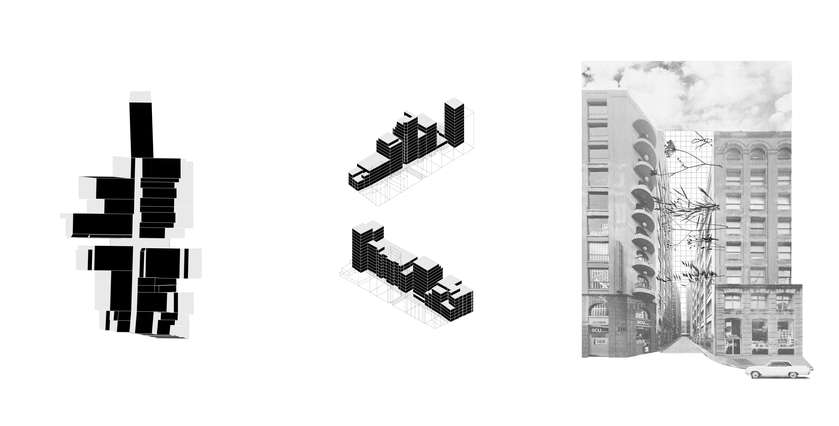
Diagonal
We will introduce a ceiling concept where the crossing of various streets is emphasized, possibly through the implementation of a novel landscape idea. Object or vegetation lines, in different levels, intersect the sky in varying diagonals much like message ropes from window to window. Our intention is to form a pattern that draws on the celestial sphere, limiting it infiniteness while introducing an unexpected landscape.
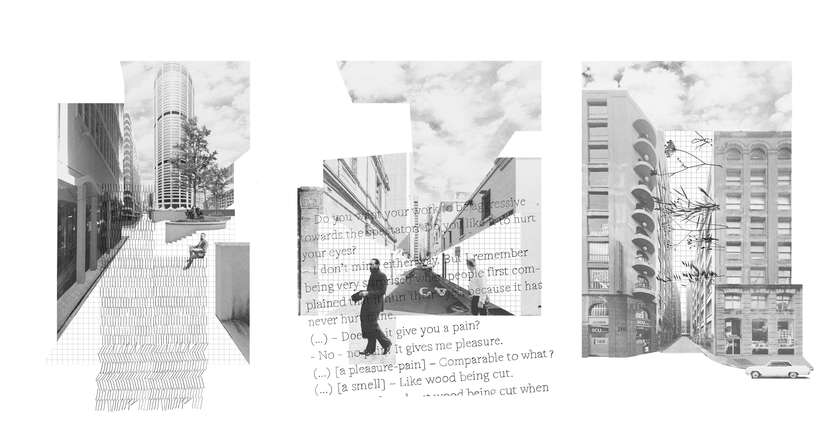
Our triptych may become a part of an urban reinvention that emphasizes the quality of space’s collective use. Each intervention can be seen a laboratory experiment establishing possible guidelines to future interconnected projects. Our methodology can be adapted to different sites through locally appropriate application strategies. Architecture and art must be part of lived spaces with a broad sense of habitability and offer residents and visitors an almost performative urban experience.